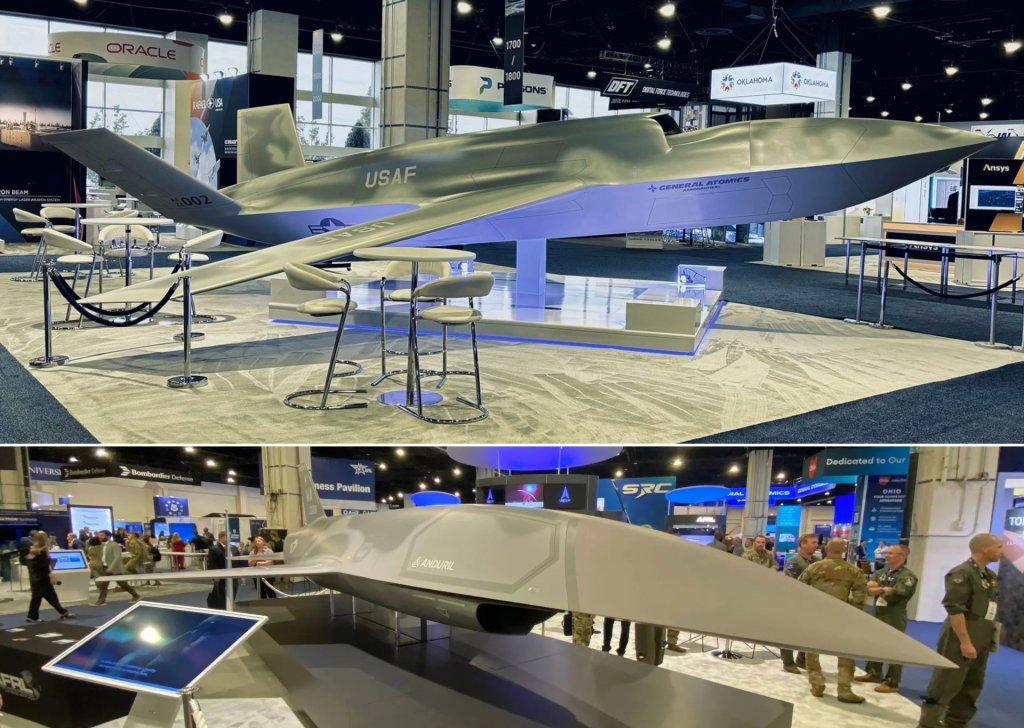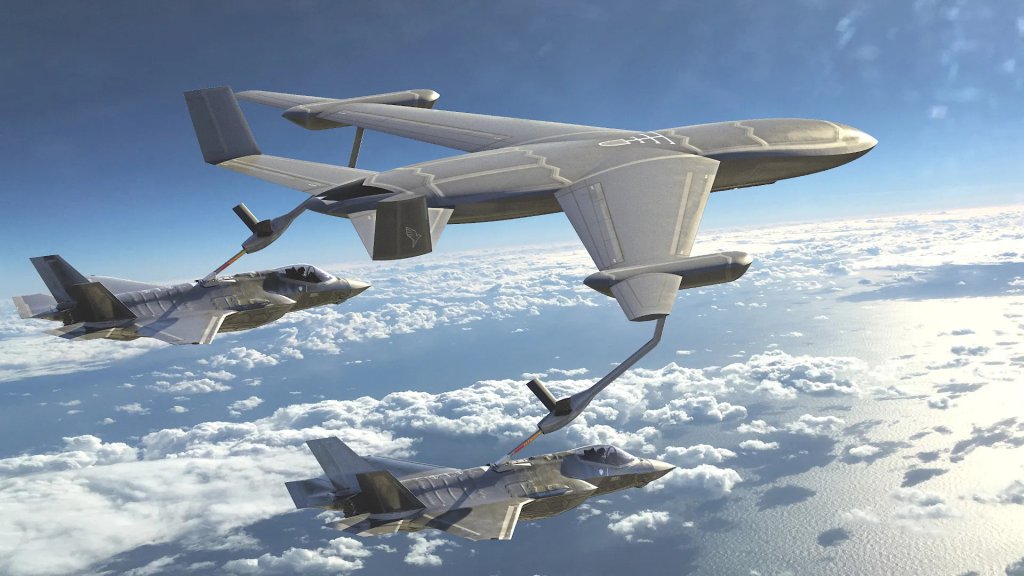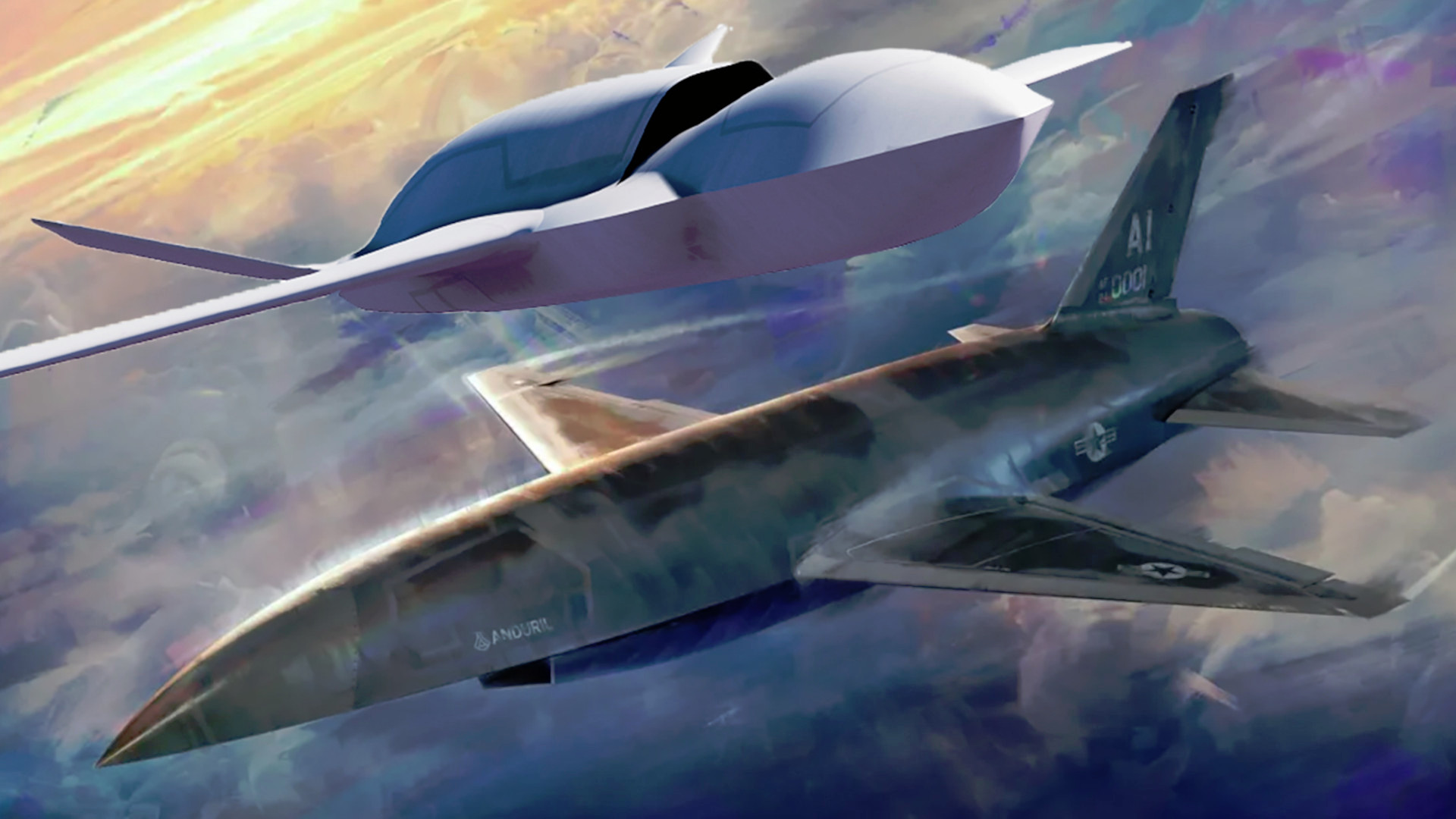The second tranche of U.S. Air Force Collaborative Combat Aircraft (CCA) drones could be between 20 to 30% more expensive per airframe than those in the first batch. At the same time, Secretary of the Air Force Frank Kendall has said he does not believe the so-called Increment 2 CCAs should evolve into high-end exquisite platforms. This comes amid serious questions about the Air Force’s ability to afford its next round of CCAs, as well as other future advanced aircraft, including new sixth-generation crewed combat jets and stealthy tankers.
Kendall spoke about plans for CCA’s Increment 2, the core requirements for which are still being solidified, in a recent interview with Air & Space Forces Magazine. The Air Force is working to acquire what could ultimately be a fleet of multiple different types of CCA drones through iterative development cycles. Anduril and General Atomics are currently developing designs as part of Increment 1. Dozens of contractors are also working on other aspects of the program, including advanced autonomous technologies.

“I think, personally, something that has some increase in cost over Increment 1 would not be outrageous,” Kendall told Air & Space Forces Magazine. “20 or 30 percent, something like that.”
Kendall has said in the past that the goal is for the price point for Increment 1 CCAs to be between one-quarter and one-third of that of an F-35 Joint Strike Fighter. This would put the price tag of a single one of those drones at between $20.5 and $27.5 million, based on publicly available Joint Strike Fighter cost data. A 20-30% increase in those figures would put the price range for Increment 2 CCAs at between approximately $24.6/$26.65 and $33/35.75 million.
“But, again, it depends upon the mix, right? What capabilities do you put on every aircraft, every CCA? What do you distribute?” Kendall added.
The Air Force’s top civilian has noted on multiple occasions in the past how CCAs designed to operate in networked groups closely together with crewed aircraft will not each have to feature the same broad mix of capabilities found on traditional combat jets. This, in turn, opens up the possibility for new design opportunities that can have beneficial downstream impacts, including when it comes to keeping costs low, across development, production, and sustainment cycles. This is something TWZ has also been highlighting for years now, well before the current CCA program emerged, especially when it comes to work on fully networked drone swarm capabilities.
The video below from Collins Aerospace presents one notional vision for how CCAs might operate together with crewed aircraft, at least initially.

“A fighter is designed to do a lot of things – a crewed fighter – have a lot of subsystems on it, sensing electronic warfare, command and control to some degree, the communications, as well as carry a variety of weapons,” Kendall said back in December during an online chat hosted by the Air & Space Forces Associations’ Mitchell Institute for Aerospace Studies. “Every CCA doesn’t have to have all those things, but you have to have a mix that, working together again with a crewed aircraft, gives you the set of capabilities that’s most cost effective.”
“I don’t regard CCAs as expendable. They’re not munitions. … we don’t send them all to die,” the Air Force’s top civilian had also said at that time. “So there needs to be enough survivability in them – the combination of how you equip them, design them, plus tactics so that you can have reasonable attrition in most areas – but they are things that you are willing to let a few of die in order to gain an advantage.”

“The good news with CCA is we started at day one with this [iterative] approach, and so a number of trades have been made, and we have the capacity to make more, right?” Andrew Hunter, Assistant Secretary of the Air Force for Acquisition, Technology & Logistics, said during a separate talk that the Center for Strategic & International Studies (CSIS) think tank hosted in December. “And because of the way that we’ve approached the CCA program with more than one increment, we can make different trade-offs in future increments.”
“Is it more capable? Is it more affordable? Where on the … spectrum will Increment 2 land? Those are questions to be explored,” Hunter added. “Is it more exquisite and where does it fall on the spectrum? … [there is] still a lot to be determined in that process.”
As noted, in his more recent interview with Air & Space Forces Magazine, Kendall said the Increment 2 CCA should “definitely” not be “exquisite” platforms. In this context, exquisite would refer to much higher-end (and expensive) drone designs, such as stealthy, highly advanced, heavier payload, flying wing uncrewed combat air vehicles (UCAV).
Air Force officials have more broadly pushed back on the idea of pursuing a stealthy UCAV in favor of lower-tier and cheaper CCA concepts that could be acquired more affordably in greater numbers. This was underscored last year by Lockheed Martin’s disclosure that its losing pitch for CCA’s Increment 1 was a higher-end “gold-plated” design. As TWZ has pointed out previously, this is all in spite of the potential value that UCAVs could provide as part of a larger mix of crewed and uncrewed aircraft and despite significant prior investments the U.S. military has made on that front. In addition, multiple countries around the world, especially China, but also including Russia, France, Turkey, and India, are actively working on flying wing-type UCAVs.

For the Air Force, discussions about what the service might want out of Increment 2 CCAs are intertwined with increasingly worrisome discussions about the affordability of a number of major modernization efforts. This includes work on a new sixth-generation stealthy crewed combat jet and advanced stealth tankers. The sixth-generation combat jet and CCA programs are both part of the Air Force’s larger Next Generation Air Dominance (NGAD) initiative. Other budget pressures, especially due to the Sentinel intercontinental ballistic missile program’s ballooning cost growth, as well as deliberations about the expected size of the future B-21 Raider stealth bomber fleet, are also factors.
A deep review of sixth-generation combat jet plans is set to wrap up under the incoming Trump administration, which will also be in a position to make new decisions about the CCA, next-generation aerial refueling aircraft, and other efforts. President-elect Donald Trump has not yet named a nominee for Secretary of the Air Force.

“These three potential new designs and platforms [the NGAD combat jet, CCAs, and stealthy tankers] are all tied together, both operationally and from an affordability perspective. We are working through a sprint of about four months of effort to determine the best combination of capabilities to pursue at various investment levels,” Kendall said during a speech last November. “The variable that concerns me most as we go through this analysis and produce a range of alternatives is going to be [the availability of adequate resources.] … to pursue any combination of those new designs.”
“Right now, given our commitments, our resources, and strategic priorities, it’s hard for me to see how we can afford any combination of those new designs,” Kendall bluntly added.

There is “a consensus that there are a number of other things that we need to fund,” but that it “would still be beneficial to have an NGAD-like aircraft” if sufficient funding is made available, the Air Force Secretary more recently told Air & Space Forces Magazine.
When it comes to CCAs, the Air Force also expects them, in general, to have a transformative impact on how it fights, as well as its day-to-day activities, including training and maintenance cycles. Last year, the service announced it had ordered more Increment 1 types to help in the development of new concepts of operations and tactics, techniques, and procedures around the new drones. Service officials have said they could ultimately buy between 100 and 150 Increment 1 CCAs, and multiple thousands of drones across all of the program’s eventual increments. Crewed surrogates, including specially modified F-16 Vipers, are supporting those efforts, as well. What the Air Force learns from that experimentation could well feed into the still-ongoing refinement of the Increment 2 requirements.
As it stands right now, the Air Force does increasingly look to be leaning toward greater capability, and cost, for its second batch of CCAs.
Contact the author: joe@twz.com
